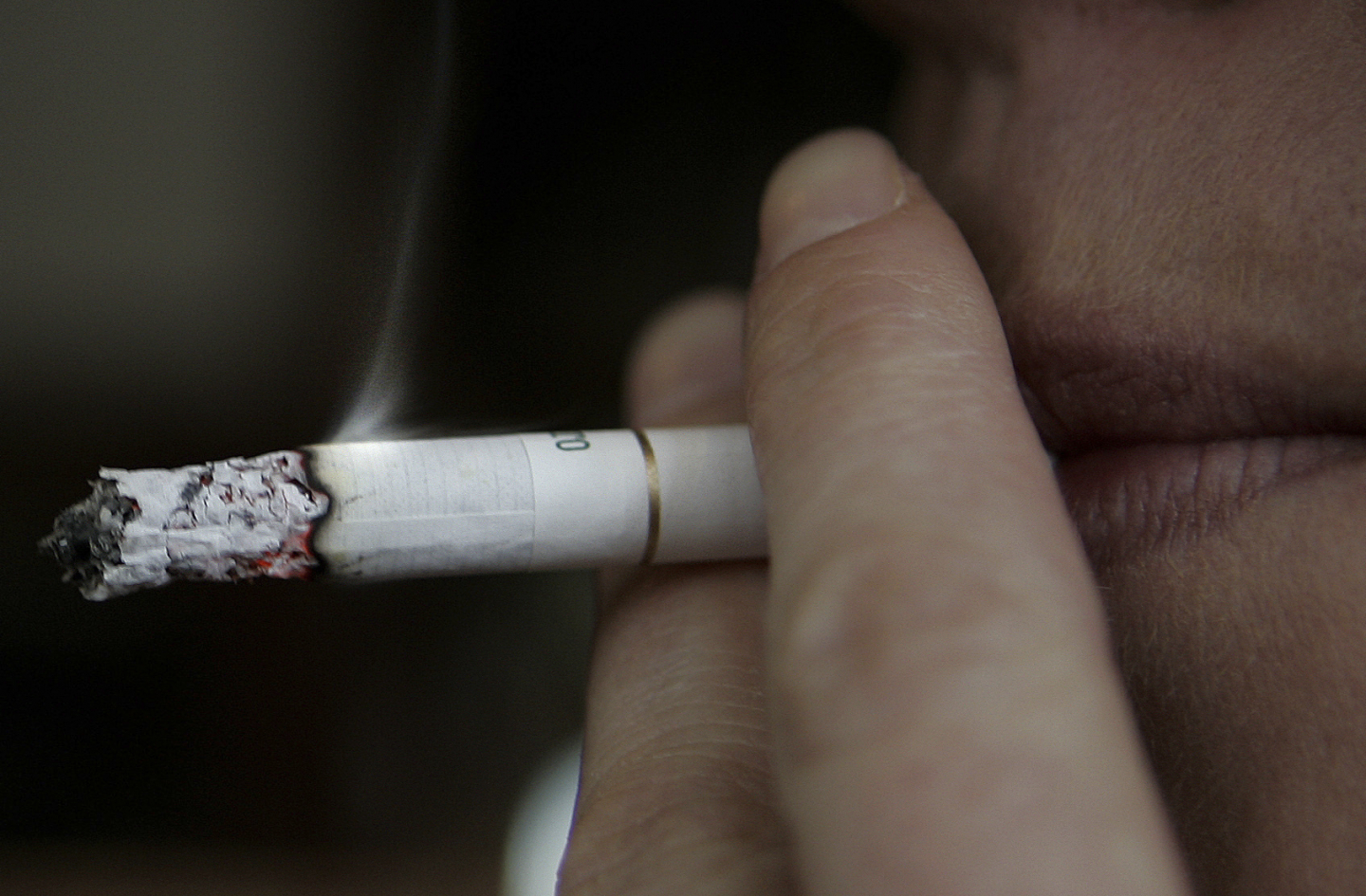Report on Adolescent Mental Health and its Alignment with Sustainable Development Goals
Introduction: The Global Mental Health Crisis Among Youth
A significant global health challenge is impacting the well-being and future of young people. This report outlines the current state of adolescent mental health, highlighting its critical intersection with the United Nations Sustainable Development Goals (SDGs). The findings underscore the urgent need for increased investment and a comprehensive, multi-sectoral response.
- One in seven adolescents globally is affected by a mental health condition.
- Suicide ranks as the third leading cause of death among young people.
- Without timely intervention, mental health conditions can severely limit educational attainment, employment opportunities, and social relationships, thereby hindering progress towards multiple SDGs.
Alignment with Sustainable Development Goals (SDGs)
Addressing adolescent mental health is not merely a health issue but a fundamental development imperative, central to the achievement of the 2030 Agenda for Sustainable Development.
SDG 3: Good Health and Well-being
The prevalence of mental health conditions directly contravenes Target 3.4, which aims to promote mental health and well-being. Current investment levels are critically insufficient to meet this goal.
- On average, less than 2% of national health budgets are allocated to mental health.
- Funding specifically for child and adolescent mental health is even more scarce.
- In low-income countries, the ratio of child mental health workers is less than 0.01 per 100,000 people, creating a massive service gap.
SDG 4: Quality Education
Mental well-being is a prerequisite for effective learning. Poor mental health negatively impacts school attendance and academic performance, undermining efforts to ensure inclusive and equitable quality education (Target 4.7). Schools, however, can be pivotal in promoting mental health.
SDG 8: Decent Work and Economic Growth
Investing in adolescent mental health yields substantial economic returns, contributing to a healthy and productive future workforce. Every dollar invested is estimated to generate a US$24 return over 80 years, directly supporting sustainable economic growth.
SDG 10: Reduced Inequalities & SDG 1: No Poverty
Global challenges such as climate change, conflict, poverty, and inequality exacerbate mental health risks. The lack of accessible services disproportionately affects vulnerable populations in low-income nations, perpetuating cycles of poverty and inequality.
SDG 16: Peace, Justice and Strong Institutions & SDG 17: Partnerships for the Goals
Effective responses require strong governance, robust policies, and cross-sectoral collaboration. The WHO-UNICEF Joint Programme exemplifies the power of partnerships (SDG 17) in building institutional capacity (SDG 16) to deliver mental health services.
A Comprehensive, Multi-Sectoral Approach for SDG Attainment
The World Health Organization (WHO) advocates for a holistic response that integrates mental health across various sectors to create supportive environments for children and young people (CYP).
Policy and Legislation
Strong national policies are foundational to building systems that deliver preventative and care services, aligning with SDG 16. This includes:
- Protecting families from economic and social adversity.
- Ensuring access to learning and employment opportunities.
- Reducing self-harm and substance use through regulation and support.
- Example: Viet Nam is institutionalizing psychosocial counselling positions in all primary and secondary schools.
Enabling Environments: Home, School, and Community
- Family Level: Caregiver support interventions can reduce the risk of mental health conditions in children by up to 40%.
- School Level: A whole-school approach, including anti-bullying and socioemotional learning programs, nurtures well-being and improves academic outcomes, contributing to SDG 4.
- Digital Spaces: Actions are needed to regulate and promote safe engagement with social media. Promising interventions include skills-building programs for adolescents and caregivers.
Integrated Prevention and Care Services
To achieve SDG 3, services must be accessible, responsive, and integrated into both health and non-health settings like schools and youth centres. The focus should be on expanding community-based services and phasing out custodial care models.
Case Studies: Global Interventions and Best Practices
Several countries demonstrate successful, scalable models for improving adolescent mental health services, providing a roadmap for global action.
- Serbia: A government-developed digital one-stop shop provides educational resources and counselling, reaching nearly 170,000 young people.
- Cote d’Ivoire: In response to a humanitarian crisis, social workers trained in child mental health were deployed to provide services to 50,000 people in refugee camps and host communities.
- Kenya: The “Shamwiri” stepped-care model trains young peer counsellors to deliver support in schools and coordinate referrals, demonstrating a cost-effective approach to expanding service access.
- Brazil: A network of community-based child psychosocial care centres (CAPSi) provides multisectoral services to CYP and their caregivers nationwide.
Challenges and Recommendations for Future Action
Strengthening Advocacy and Accountability
A significant barrier to progress is the lack of robust data and accountability mechanisms. In 2020, nearly half of low-income countries could not disaggregate mental health data by age, hindering targeted policy-making.
Key Recommendations
- Increase Investment: Governments and partners must significantly increase financial allocation to child and adolescent mental health to meet SDG 3 targets.
- Adopt a Comprehensive Approach: Implement cross-sectoral strategies involving health, education, and social welfare to create enabling environments and integrated care systems.
- Scale Up Proven Interventions: Leverage evidence of successful, cost-effective interventions and adapt them to local contexts.
- Enhance Accountability: Meaningfully involve young people and caregivers in advocacy and policy-making, and strengthen health information systems to track progress towards global and national commitments.
1. Which SDGs are addressed or connected to the issues highlighted in the article?
SDG 3: Good Health and Well-being
- The entire article is centered on the mental health of children and young people (CYP), directly aligning with the goal of ensuring healthy lives and promoting well-being. It highlights the prevalence of mental health conditions (“One in seven adolescents has a mental health condition”), discusses suicide as a leading cause of death, and advocates for increased investment and access to care services.
SDG 4: Quality Education
- The article connects mental health to education by stating that unsupported conditions can “negatively impact children and young people’s (CYP) education.” It also identifies schools as crucial environments for promoting well-being through initiatives like “psychosocial counselling positions in all primary and secondary education schools” in Viet Nam, “anti-bullying programmes,” and “socioemotional learning.”
SDG 10: Reduced Inequalities
- The article points to significant inequalities in mental health care access. It notes that “investment remains low” and services are often “out of reach,” particularly in low-income countries where there are “fewer than 0.01 child mental health workers per 100,000 people.” It also mentions that factors like poverty and inequality intensify mental health risks, connecting directly to the goal of reducing inequality within and among countries.
SDG 16: Peace, Justice and Strong Institutions
- The article addresses this goal by highlighting how “conflict” and “violence” are intensifying risks to mental health. It also calls for strengthening governance through “stronger policies, legislation,” and “cross-sector coordination” to build effective systems for mental health care. The promotion of “school-based anti-bullying programmes” also relates to reducing violence against children.
SDG 17: Partnerships for the Goals
- This goal is explicitly addressed through the mention of collaborative efforts. The article describes how “WHO has partnered with UNICEF, governments, and local stakeholders to deliver a Joint Programme on Mental Health and Psychosocial Wellbeing and Development of Children and Adolescents.” This highlights the importance of multi-stakeholder partnerships to achieve global health objectives.
2. What specific targets under those SDGs can be identified based on the article’s content?
SDG 3: Good Health and Well-being
- Target 3.4: “By 2030, reduce by one third premature mortality from non-communicable diseases through prevention and treatment and promote mental health and well-being.” The article’s core focus is on promoting mental health and well-being for adolescents and preventing negative outcomes. It directly addresses this target by highlighting that “Suicide is the third leading cause of death among young people globally” and advocating for timely care to improve outcomes.
- Target 3.5: “Strengthen the prevention and treatment of substance abuse, including narcotic drug abuse and harmful use of alcohol.” The article mentions that school-based programs can “reduce risk behaviours, including… harmful substance use.”
- Target 3.8: “Achieve universal health coverage, including… access to quality essential health-care services…” The article emphasizes the lack of access to mental health services, stating they are “often out of reach,” and calls for expanding “community-based services” in both health and non-health settings like schools.
- Target 3.c: “Substantially increase health financing and the recruitment, development, training and retention of the health workforce in developing countries…” This target is directly relevant as the article laments that “mental health receives less than 2% of national health budgets on average” and points to the critical shortage of “child mental health workers” in low-income countries.
SDG 4: Quality Education
- Target 4.a: “Build and upgrade education facilities that are child, disability and gender sensitive and provide safe, non-violent, inclusive and effective learning environments for all.” The article supports this target by advocating for schools to be “places that nurture well-being, inclusion” and promoting “school-based anti-bullying programmes” to create a safe environment.
SDG 10: Reduced Inequalities
- Target 10.2: “By 2030, empower and promote the social, economic and political inclusion of all…” The article calls for a response that “fosters social inclusion and connectedness, and addresses structural issues such as housing, education, and employment,” which are key determinants of mental health and are central to reducing inequalities.
SDG 16: Peace, Justice and Strong Institutions
- Target 16.1: “Significantly reduce all forms of violence and related death rates everywhere.” The article identifies “conflict” and “violence” as factors that intensify mental health risks and promotes “anti-bullying programmes” as a measure to reduce violence in schools.
- Target 16.2: “End abuse, exploitation, trafficking and all forms of violence against and torture of children.” The focus on anti-bullying programs directly contributes to creating safer environments for children and ending a form of violence against them.
SDG 17: Partnerships for the Goals
- Target 17.17: “Encourage and promote effective public, public-private and civil society partnerships…” The article provides a clear example of this target in action through the “WHO… partnered with UNICEF, governments, and local stakeholders” on the Joint Programme for mental health.
3. Are there any indicators mentioned or implied in the article that can be used to measure progress towards the identified targets?
SDG 3: Good Health and Well-being
- Indicator 3.4.2 (Suicide mortality rate): The article explicitly states, “Suicide is the third leading cause of death among young people globally,” which is a direct use of this indicator to frame the problem.
- Prevalence of mental health conditions (Implied): The statistic “One in seven adolescents has a mental health condition” serves as a baseline indicator for the prevalence of mental disorders.
- Indicator 3.c.1 (Health worker density and distribution): The article provides a specific data point for this indicator: “In low-income countries, there are fewer than 0.01 child mental health workers per 100,000 people.”
- Proportion of health budget allocated to mental health (Implied): The statement that “mental health receives less than 2% of national health budgets on average” is a clear indicator of financial commitment.
SDG 4: Quality Education
- Proportion of schools with specific programs (Implied): Progress towards Target 4.a can be measured by tracking the implementation of programs mentioned, such as the number or proportion of schools with “psychosocial counselling positions,” “anti-bullying programmes,” and “socioemotional learning” initiatives.
SDG 17: Partnerships for the Goals
- Number of people reached by partnership programs (Implied): The article provides metrics for the WHO-UNICEF Joint Programme, which can serve as indicators of its impact: “over 10 million children and young people have access to improved services, with more than 6 million reached through prevention efforts and at least 330,000 receiving care.”
Data Collection Capacity (Cross-cutting Indicator)
- The article implies a critical need for an indicator on data systems capacity by stating, “In 2020, health information systems in nearly half of low-income countries did not have capacity to disaggregate mental health data by age.” Improving this capacity is essential for tracking progress on all related goals.
4. Create a table with three columns titled ‘SDGs, Targets and Indicators” to present the findings from analyzing the article.
| SDGs | Targets | Indicators |
|---|---|---|
| SDG 3: Good Health and Well-being |
3.4: Promote mental health and well-being.
3.5: Strengthen prevention of substance abuse. 3.8: Achieve universal health coverage. 3.c: Increase health financing and workforce. |
– Suicide mortality rate (“third leading cause of death among young people”). – Prevalence of mental health conditions (“One in seven adolescents”). – Implementation of programs to reduce harmful substance use. – Access to community-based mental health services. – Proportion of national health budget allocated to mental health (“less than 2%”). – Density of child mental health workers (“fewer than 0.01 per 100,000 people” in low-income countries). |
| SDG 4: Quality Education | 4.a: Provide safe, non-violent, and inclusive learning environments. |
– Proportion of schools with psychosocial counselling positions. – Proportion of schools implementing anti-bullying and socioemotional learning programs. |
| SDG 10: Reduced Inequalities | 10.2: Promote social, economic, and political inclusion. | – Implementation of policies that address structural issues (poverty, inequality) affecting mental health. |
| SDG 16: Peace, Justice and Strong Institutions |
16.1: Reduce all forms of violence.
16.2: End abuse and violence against children. |
– Implementation and reach of anti-bullying programs in schools. |
| SDG 17: Partnerships for the Goals | 17.17: Encourage effective public, public-private and civil society partnerships. |
– Number of multi-stakeholder partnerships (e.g., WHO-UNICEF Joint Programme). – Number of people reached by partnership initiatives (“over 10 million children and young people”). |
Source: who.int







